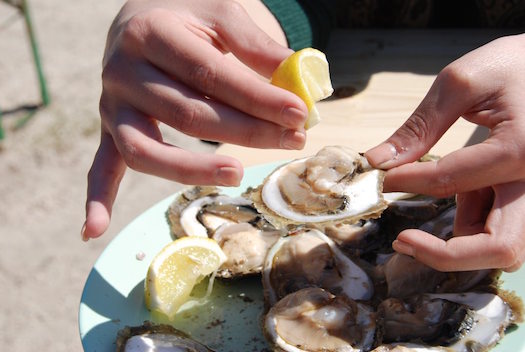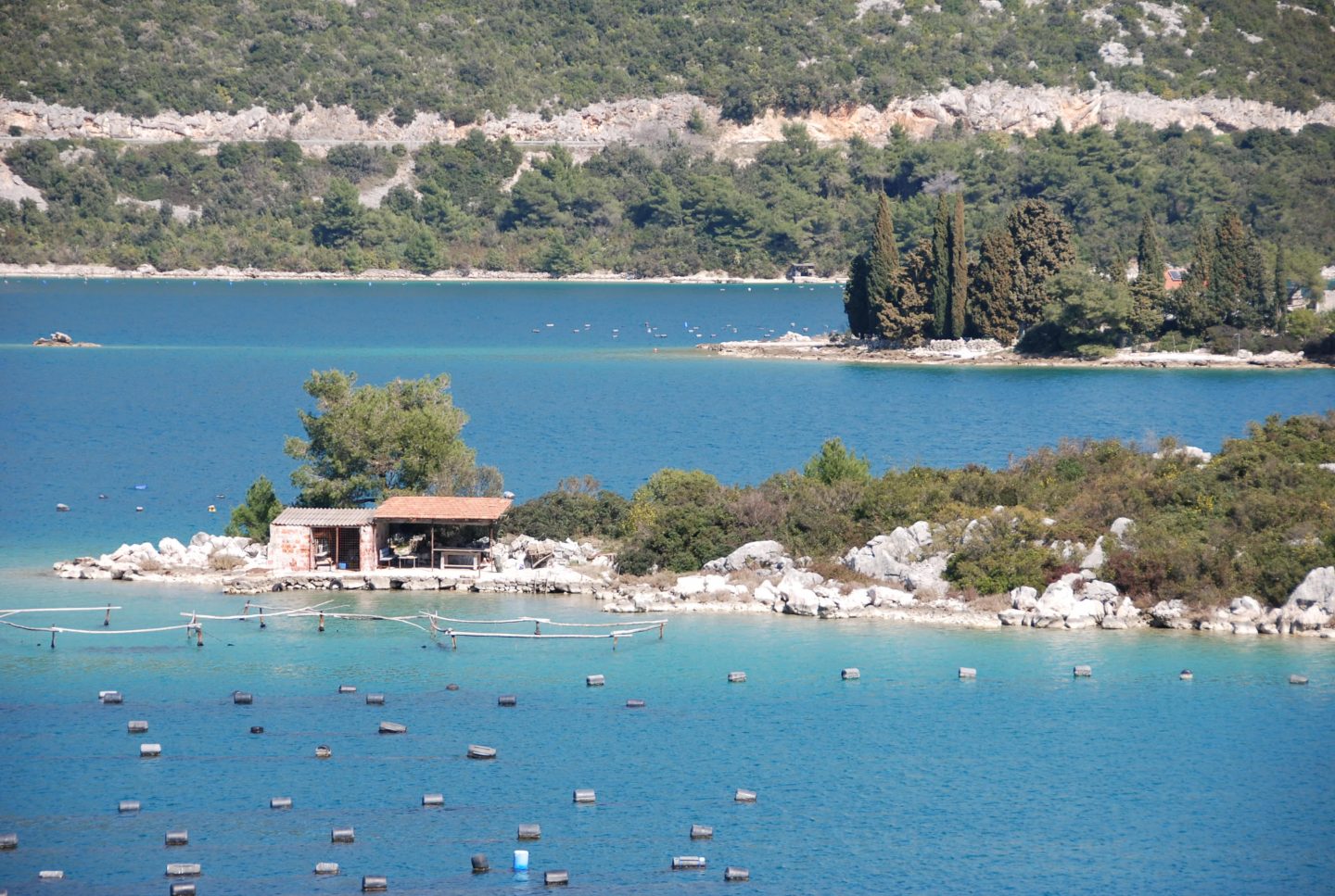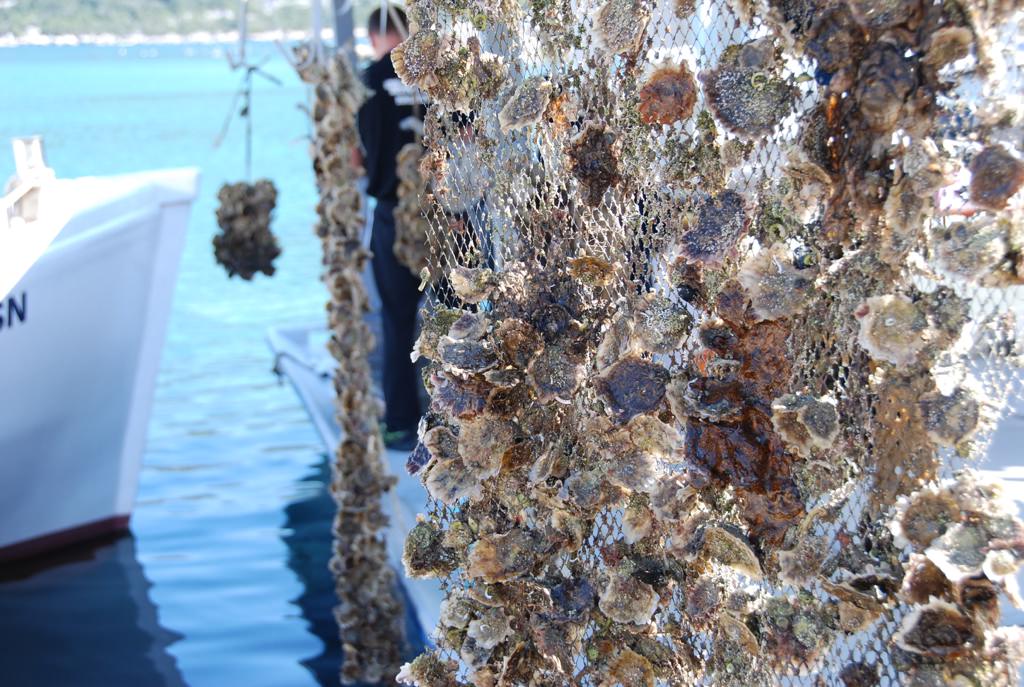Heart of Iron – Oysters
No, it’s not a new computer fantasy game, we’re talking about oysters – also known as sea aphrodisiacs, Ostrea edulis in Latin or kamenicama in Croatian. These world-renowned delicacies come from a small bay near Dubrovnik, that has become a destination for the true gourmand.
Oysters Love or Hate | “How hungry did the first person to eat that have to be?”
This interesting question was actually posed in the pages of National Geographic. Few dishes can rival the raw oyster for unpalatable appearance and general “ick” factor.
If undaunted by the oyster’s rough, rocky, nearly-impossible-to-open shell, the undoubtedly famished first taster would then have confronted the gray, slimy appearance of its plump body. Once beyond any primal gag reflex though, this seminal slurper would have been surprisingly rewarded with the oyster’s delicate, chewy texture, rich flavour, and salty liquor.
Or not? The taste of raw oysters is one of those flavours most people simply love or hate.
Rarely can you hear someone say “Oh well, they’re kind of OK, nothing special”.
Personally, we are on the LOVE side. We particularly appreciate the way American TV chef and author Anthony Bourdain described his first oyster experience:
“I remember it like I remember losing my virginity, and in many ways more fondly. It tasted of seawater … of brine and flesh … and of the future. Everything was different now. My brother’s expression of unrestrained revulsion … reinforced the sense that I had somehow become a man.”
Admittedly, they’re not for everyone, but adventurous humans the world over have enjoyed oysters, raw and cooked, for thousands of years, benefiting also from their high calcium, iron, and protein content.
Love | Or at least decide to give them a try
Oyster aficionados agree that a good oyster must be served cold, fresh (look for white to gray colour), preferably be medium in size, tender and juicy. Oysters are best when opened right out of the sea, sprinkled with lemon juice, and followed by a sip of wine.

Rare and exotic, such highly prized delicacies are often a luxury available to the lucky few, unless you’re vacationing in Dubrovnik!
Mali Ston, a small bay about 45 minutes drive north of Dubrovnik is one of the few remaining places in the Mediterranean that still has water clean and clear enough, along with an unique set of favourable hydrological conditions to support oyster farming.
Oysters have been harvested in Ston since Roman times. The peak of oyster season is the beginning of March, traditionally starting with the feast of St. Joseph, when they are the fullest, but can be enjoyed fresh throughout the entire summer.
The simplest way to join the hedonistic club of oyster aficionados is to drive up to Ston and wait on the one of the piers for growers to return from their oyster beds. Better yet, pair oysters with octopus salad or black shellfish risotto at one of the local restaurants. A small half-day tour with a private transfer to the area starts from €240. For more information please contact our Adriatic Luxury Services at als@als.hr

While in the area
While it is a common belief that oysters are best paired with champagne, we beg to differ! Wine is the natural companion to oysters. So since you are already in the Peljašac wine growing region, use this opportunity to discover one of the many wine tours the area has to offer – here is an ALH suggestion: “The Wine”
Also visit:
– Ston City Walls – one of the best kept secrets – the longest complete fortress system around a town in Europe – in fact second after the Great Wall of China.
– Ston Salt Works – sea salt harvesting facilities that date back to the period of Dubrovnik Republic and still operate as they did 500 years ago.

Are Oysters an Aphrodisiac? The food of love?
The oyster’s reputation as an aphrodisiac dates back thousands of years. The Roman satiric poet Juvenal wrote of women’s rampant behaviour after consuming wine and eating giant oysters. Casanova is said to have eaten fifty a day for breakfast.
Nutritionists have never found anything in an oyster to support the theory and would argue that the Roman ladies are more likely to have been aroused by the wine than the oysters. But the oyster is a rich source of zinc, one of the minerals required for the production of testosterone, so there may be something in it. And none could deny that the psychological impact of simply believing in the oyster’s aphrodisiac power may be enough to stimulate desire and more vigorous performance.
In other words, if you believe it will work, it just might!
Visit us on Instagram












